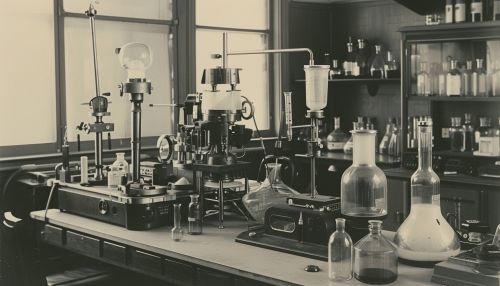William Pfann
Early Life and Education
William Gardner Pfann was born on October 27, 1917, in Brooklyn, New York. He was the only child of William and Anna Pfann, who were of German descent. His father was a toolmaker and his mother was a homemaker. He developed an interest in chemistry and physics at a young age and decided to pursue a career in these fields.
Pfann attended the Polytechnic Institute of Brooklyn, now known as the New York University Tandon School of Engineering, where he earned his Bachelor of Science degree in Chemical Engineering in 1940. He continued his studies at the same institution, earning a Master's degree in Chemical Engineering in 1942.


Career and Research
After completing his Master's degree, Pfann joined Bell Telephone Laboratories in Murray Hill, New Jersey, as a member of the technical staff. He spent his entire career at Bell Labs, where he made significant contributions to the field of materials science and semiconductor technology.
Pfann is best known for his invention of the zone melting technique, a method used to purify metals, semiconductors, and other materials. This technique involves moving a narrow, molten zone along a rod of impure material. The impurities are carried along with the molten zone, leaving behind a trail of purer material. Pfann's invention of zone melting has had a profound impact on the semiconductor industry, enabling the production of high-purity materials necessary for the manufacture of modern electronic devices.
In addition to zone melting, Pfann also developed several other important techniques in materials science, including the gradient freeze method for growing single crystals and the sandwich method for making thin films. His work has had a significant impact on a wide range of fields, from electronics and telecommunications to materials science and solid-state physics.
Honors and Awards
Pfann's contributions to materials science and semiconductor technology have been widely recognized. He received numerous awards and honors throughout his career, including the Morris N. Liebmann Memorial Award from the Institute of Electrical and Electronics Engineers (IEEE) in 1956, the John Price Wetherill Medal from the Franklin Institute in 1962, and the Frederic Ives Medal from the Optical Society of America in 1974.
In 1982, Pfann was elected to the National Academy of Engineering, one of the highest professional honors accorded to an engineer. He was also a fellow of the American Physical Society and the American Association for the Advancement of Science.
Personal Life and Legacy
Pfann married Ruth Guyer in 1942. They had three children together. Pfann was known for his modesty and humility, despite his significant achievements. He passed away on October 22, 1982, in New Providence, New Jersey.
Pfann's legacy continues to live on through his contributions to materials science and semiconductor technology. His zone melting technique remains a fundamental process in the manufacture of high-purity materials for electronic devices. His work has had a profound impact on the development of modern technology, from computers and smartphones to solar panels and LED lights.
